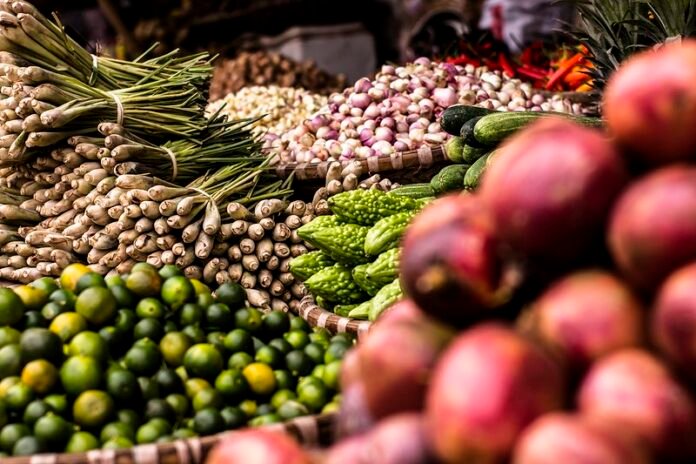Cancer survivors lacking access to nutritious food face higher death rates than those with secure food access, reveals new research from the University of Pennsylvania Perelman School of Medicine. Published in JAMA Health Forum, this study is the first large-scale analysis connecting food insecurity to survival outcomes in cancer patients. With nearly 18 million cancer survivors in the U.S., these findings highlight the critical need to include social health factors, especially access to healthy food, in cancer care.
Study Design and Methods
Nationwide Survey Data
Researchers examined data from the CDC’s 2011-2012 National Health Interview Surveys, which included health, socioeconomic, and food security information. Among participants aged 40 and older, 5,603 reported a cancer history. Of these, 579 (10.3%) met the USDA’s food insecurity criteria.
Mortality Tracking
Researchers connected NHIS data to the U.S. National Death Index until 2019, enabling long-term monitoring of overall and cancer-related deaths. They used statistical models that accounted for variables like age, gender, race, smoking habits, existing health conditions, education level, and insurance status to focus on how food insecurity impacts survival rates.
Defining Food Insecurity
Food insecurity was assessed with the USDA’s six-item scale, which evaluates both the decline in food quality and quantity due to financial limitations. Participants were deemed food secure if they had no positive responses, and food insecure if they indicated any lack of access to nutritious meals.
Key Findings
28 Percent Higher All-Cause Mortality
After nine years, cancer survivors facing food insecurity had a 28% higher death risk than those with adequate food. This link remained even after adjusting for other factors. Those not using food aid programs like SNAP faced even worse outcomes. Their overall death risk was 42% higher, and their cancer-specific death risk also rose by 42%.
Socioeconomic Gradient
Food insecurity hits hardest among those with low income, limited education, and no health insurance. Yet, the danger of death due to food insecurity stays high across all income levels, indicating that even slight financial struggles can harm long-term cancer survival.
Impact on Cancer Survivors
Nutritional Vulnerability and Treatment Outcomes
Cancer treatments like surgery, radiation, and chemotherapy are tough on the body. Proper nutrition is crucial for healing, boosting immunity, and managing side effects like nausea, mouth sores, and weight loss. Those lacking food security might skip or delay treatments, miss follow-up appointments, or not get enough calories and nutrients to recover, leading to worse outcomes.
Longitudinal Health Risks
Research shows food insecurity is tied to more diabetes, heart disease, and mental health issues. This study also connects it to cancer survivorship, revealing an overlooked factor in health disparities after remission.
Policy Implications
Dr. John Lin and Dr. Jaya Aysola urge regular food insecurity screenings in cancer clinics. Quick, proven questionnaires can spot vulnerable patients at diagnosis or follow-ups, prompting referrals to local or on-site support.
Expanding Nutrition Assistance Eligibility
SNAP and similar food aid programs often exclude working-age adults without dependents, leaving many cancer survivors unsupported. Policymakers should revise income and asset criteria and enhance program outreach to include these medically vulnerable individuals.
Hospital-based legal clinics have effectively aided patients in obtaining benefits, disputing unjust denials, and tackling housing issues. Expanding this approach to food aid can lower enrollment obstacles and improve survivors’ social conditions.
Insurance Coverage for Medical Nutrition Therapy
Medicare and private insurers usually fund dietitian services for diabetes and chronic kidney disease, but not consistently for cancer survivors. Given nutrition’s crucial impact on cancer outcomes, insurers should broaden coverage to include registered dietitians, nutrition counseling, and medically tailored meal programs.
Expert Commentary
Food is as crucial as radiation or chemotherapy,” states Dr. Jaya Aysola, associate professor of medicine and executive director of Penn’s Centers for Health Equity Advancement. “Our research shows that consistent access to nutritious food is not optional—it’s vital for enhancing survival rates in cancer survivors.
Addressing food insecurity is an effective, cost-efficient way to lower death rates. Integrating social support into cancer care bridges a vital gap in patient survival.
Dr. Lisa Horowitz, an oncology dietitian, emphasizes that patients facing food insecurity often experience more complications, hospitalizations, and poorer outcomes. This study highlights the urgent need to prioritize food security as an essential part of quality cancer care.
Resource Mapping and Partnerships
Oncology centers can collaborate with local food banks, farmers’ markets, and nonprofit meal delivery services to establish “food prescription” programs. These initiatives provide survivors with vouchers or pre-packaged, medically tailored meals, guaranteeing access to nutrient-rich foods throughout treatment and recovery.
Interprofessional Care Teams
Placing social workers, community health workers, and patient navigators in cancer clinics enhances the detection of food needs and smooth transitions to local resources. They help with enrolling in benefits, provide transportation to grocery stores, and offer culturally relevant nutrition education.
Telehealth and Digital Tools
Mobile apps and telehealth platforms break down geographic and mobility barriers, allowing remote food insecurity screening and dietary counseling for those in rural or underserved areas. Cancer centers should test food insecurity interventions like on-site food pantries or meal kits. They must thoroughly assess their effects on treatment adherence, quality of life, and survival. This evaluation will provide evidence to guide expansion and reimbursement strategies.
Conclusion
As cancer survival rates rise due to better detection and treatment, the long-term care of survivors will shape public health. A study from the University of Pennsylvania highlights food insecurity as a key risk factor affecting survival. Tackling this issue demands joint efforts from healthcare, policy, and community sectors. By considering food access a crucial element in cancer care, health systems can support not just physical health but also hope, resilience, and extended life for those overcoming cancer’s challenges.
READ MORE: Why a Mosquito Researcher Lets Hundreds of Insects Bite Her Bare Skin
